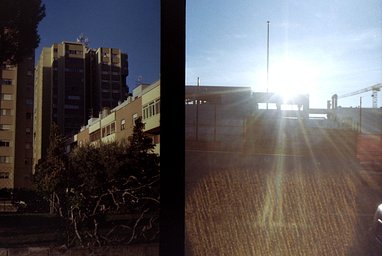What is a half-frame film camera?
All photographers must have at least one half-frame camera in their arsenals, if we say so ourselves.
As its name implies, half-frame cameras, also known as single-frame or split-frame, are those that shoot 18×24 mm photographs on 35 mm film. In other words, that’s half of what standard full-frame cameras take (24×36 mm).

What sets half-frame cameras apart is that they are not only compact and functional, but are also economical – a 12-, 24-, or 36-frame roll yields twice the number of shots on a 35 mm film that can be easily bought. This means you can take up to 72 images on one single roll and save a lot of film!
The 1960s saw half-frame cameras enjoy widespread popularity, something that eventually ended when full-frame 35 mm cameras as small as their half-frame counterparts began to be introduced in the market. With our Diana Mini you may alternate between shooting half-frame images or square images. The Lomo LC-Wide is also capable not only of shooting half-frame photos but also full-frames and squares, with every photo having that signature lomographic look.
Anything missing?
Can’t find an answer to your question? Or do you have some useful advice to add to one of our courses? We want to build the world’s largest analogue learning space, so please send any further requests or information to school@lomography.com and we’ll take a look!
Photos From Other Students
Do you want to see your photos featured here for all Lomo School students to see? If you think your photos fit this article just tag them with “half-frame”. We take a look at all these photos and select our favorites. See all photos tagged with “half-frame” here.
More Courses
-
What are the different photographic film formats?
The three main types of film format are 35 mm, medium format and large format. More unusual formats also exist such as 110 and 127.
-
What is tungsten film?
Most standard films are daylight-balanced, so they tend to capture the yellow-orange cast from tungsten lights. To address this, tungsten film was created to produce color-correct images taken under artificial lighting.
-
What is 126 film?
126 film was launched by Kodak in 1963 as a way to simplify the process of loading and unloading film into cameras. Its name comes from the negatives’ dimension of 26.5 mm square. Although companies ceased mass production of 126 format around 2007 to 2008, its cartridge is still known and loved today.
-
What is APS film?
Advanced Photo System or APS film was introduced in 1996 as a “high-tech” or modern alternative to the 126 and 110 film formats. It was 24 mm wide and it introduced many innovations, like the ability to choose exposure lengths and print sizes. Production of new APS film was ceased in 2011.
-
What is the difference between panchromatic and orthochromatic film?
Orthochromatic film is made with blue-sensitive silver halide crystals, while panchromatic film adds other chemicals to increase the film’s sensitivity into the green and red parts of the spectrum.
-
What are LomoChrome films?
LomoChrome is the name given to Lomography’s experimental film stocks. There are currently four LomoChrome film stocks available: LomoChrome Purple, LomoChrome Turquoise, LomoChrome Metropolis, and LomoChrome Color ‘92.
-
Where to get film developed?
There are a lot of places that can process and develop your 35 mm color negative film such as local drugstores or one-hour photo labs.
-
What is the processing method for Redscale and LomoChrome films?
All Lomography color films are processed using C-41 chemicals. This includes Lomography RedScale XR and our popular range of color-shifting LomoChrome films – LomoChrome Purple, LomoChrome Metropolis and LomoChrome Turquoise
-
What is cross processing?
Cross processing (or “X-pro”) is the procedure of deliberately processing film in a chemical solution intended for a different type of film. As each chemical mixture is optimized for a specific kind of film, you will get unpredictable results when combining them differently.

























